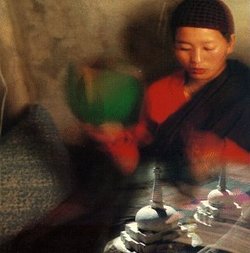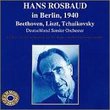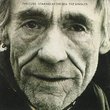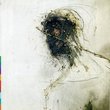| All Artists: Choying Drolma & Steve Tibbetts Title: Cho Members Wishing: 4 Total Copies: 0 Label: Hannibal Release Date: 1/21/1997 Genres: Dance & Electronic, International Music, Jazz, New Age, Pop, Rock Styles: World Dance, Far East & Asia, Progressive, Progressive Rock Number of Discs: 1 SwapaCD Credits: 1 UPCs: 031257140423, 031257140447, 031257140461, 409999999997 |
Search - Choying Drolma & Steve Tibbetts :: Cho
 | Choying Drolma & Steve Tibbetts Cho Genres: Dance & Electronic, International Music, Jazz, New Age, Pop, Rock
Choying Drolma and the Nagi Nunnery Foundation sing songs and invocations of the Cho ("cutting") teachings based on the Prajnaparamita practices established by siddha Padampa Sangye and Machik Labdron. The delicate filigre... more » |
Larger Image |
CD DetailsSynopsis
Amazon.com Choying Drolma and the Nagi Nunnery Foundation sing songs and invocations of the Cho ("cutting") teachings based on the Prajnaparamita practices established by siddha Padampa Sangye and Machik Labdron. The delicate filigree of chants and supplications is beautifully and sparsely adorned by Tibbetts's treated guitars, percussion, and effects to create an otherworldly experience so alluring in its fragility it is easy to forget the strength of purpose behind these messages of generosity, loving kindness, and compassion through release of the ego. Far beyond the often superficial "new age," Cho is so rich in contemplation and spirituality that even a cursory listen can hardly fail to evoke a beneficial response, and this glorious tapestry of sound alone is enough homage to its 1,100-year legacy. --Derek Rath Similar CDs
Similarly Requested CDs
|
CD ReviewsBEATIFUL AND TRANSPORTING -- SIMPLY STUNNING Larry L. Looney | Austin, Texas USA | 08/21/2002 (5 out of 5 stars) "I've heard works by Steve Tibbetts before, over the years. I don't own any of his recordings, but I've admired his work and his talents -- some of his ECM recordings might well find their way into my collection in due time. I found this cd a couple of days ago while browsing in the international section at our local, internationally legendary independent music store here in Austin, Texas (which shall remain nameless to keep the folks at Amazon happy -- they, after all, carry a lot of wonderful music, easily accessible for all...). I found three discs in the Tibetan section -- CHO being one of them. After listening to bits of all three, this is the one I took home -- I can't recall being so touched by a piece of music in a long time.The voices on the recording are mostly those of Choying Drolma and her 'fellow' nuns from the Nagi Gompa Buddhist nunnery in the Kathmandu Valley of Nepal. Multi-instrumentalist Tibbetts delicately underscores the natural beauty of their songs and chants with grace and imagination -- all the while remaining in a respectfully supportive role. Too many Western artists, attempting this same project, might have overstepped -- hats off to Steve for not doing so.I would gently offer that I have a small 'bone to pick' with a review below, which mentioned that Steve did this recording as 'a favor to the nuns', never intending it to be released to the public, the reviewer also questioning if the album 'works'. Respectfully, I would say that the album 'works' immensely well -- but I would agree that it's not something for general popular consumption. The tastes of too many listeners in the West have been numbed by the LCD (lowest common denominator) music shoved down our throats for years by commercial radio. This recording offers something far above that, creativity and cooperation by differing cultures on a whole other level. I would also like to state that I agree with the reviewer's assessment of some of Steve's work being a little jarring -- my tastes run more toward the gentler, subtler works in his catalogue, but to each his or her own.The album shows that East and West can meet and co-exist, with respect and dignity felt and shown on both sides. There are translations supplied for four of the pieces in the booklet, as well as some very interesting and relevant background information on both the music and the school of Tibetan Buddhism from which it springs. This is one of those priceless recordings that can be enjoyed with rapt attention or in an ambient setting -- it's equally rewarding either way." Something special Larry L. Looney | 11/05/1999 (5 out of 5 stars) " Steve Tibbetts and Choying Drolma- CHO Choying Drolma is a Buddhist nun from Nagi Gompa which is situated within the Himalayan foothills. Back in 1994 Steve Tibbetts on one of his many visits to the Nepalese kingdom recorded these nuns singing and later on, one assumes, in the comfort of his home studio recorded his guitar work over the chanting, as well as employing the services of long time percussionist Marc Anderson. When I first received this I thought "Oh no, not enough record of Tibetan chanting." After all how much of this stuff can one listen to. In the last 12 months I had received about a dozen cd's of Tibetan chant . Most of what I had received had always been sung by men, so the first thing that made me sit up and listen was the honey sweet vocals of Choying Drolma. I had been re writing my diaries that I kept from my travels throughout India and Nepal back in 1986 and hearing the voices again brought back many good memories. What I heard was simple, honest and spiritual chanting. If you are expecting the loud and distorted guitar that has been fairly evident in a lot of Tibbett's albums you will be disappointed. Most of his guitar here is very much in the background, allowing Choying to do what she does best.Tibbett's does not dominate this recording but at the same time his presence is there. In the last weeks I have not had this off the walkman as I go to work. On more than one occasion I have fallen asleep on the bus because of the fact that it is so beautiful and peaceful to listen to.It truly is one of the most contemplative recordings to have come out in the last 12 months. According to the notes that came with this" the Tibetans do not see this style of music as folk music, but rather perceive the depth of meaning in these songs as capable of enhancing understanding and transforming ordinary experiences." Overall this recording is well worth the price. My only complaint is it's not long enough.It clocks in at 49 minutes. Proceeds from the cd will go towards the nunnery. First purchase will be a hot water system. Cho- Rykodisc/ Hannibal HNCD 1404 " Transporting! Brianna Neal | USA | 12/31/2003 (4 out of 5 stars) "Haunting, simple and surreal, this is music that will gently but unapologetically usher you into another world. The nasal, microtonal chants of Tibetan nuns from Nagi Gompa, led by Choying Drolma, are enhanced by tasteful, sparing and somehow utterly appropriate accompaniments composed by Steve Tibbets. Instruments used include bells, simple drums, guitar, bouzouki, cymbals, cello, viola da gamba, violin and electric bass, but don't expect any funky club-like fusion act here. This music is the real thing--utterly Tibetan and utterly alien for most western ears, with the subdued and often atonal instrumentals falling quietly and respectfully in line behind the chanting nuns. According to the CD insert, "Cho" is a system of contemplative Buddhist practices based on Prajnaparamita. The literal translation of the word is "cutting", as in cutting through ego-clinging and excising demons. It took me a few listens to get used to this album, expecting the chants to be jarring and distracting, but finding them unexpectedly comforting instead. Now "Cho" is one of my favorite albums to meditate to--simultaneously down-to-earth and otherworldy. For a livelier interpretation of traditional Buddhist chants, check out the releases of the Japanese group Uttara Kuru."
|

 Track Listings (16) - Disc #1
Track Listings (16) - Disc #1
















